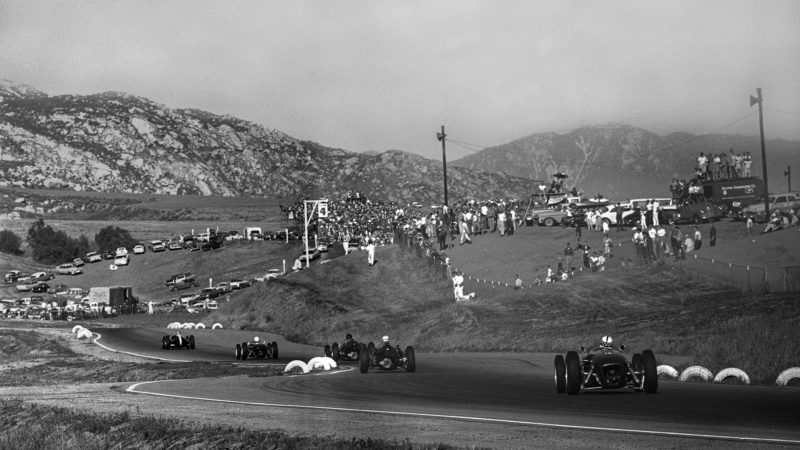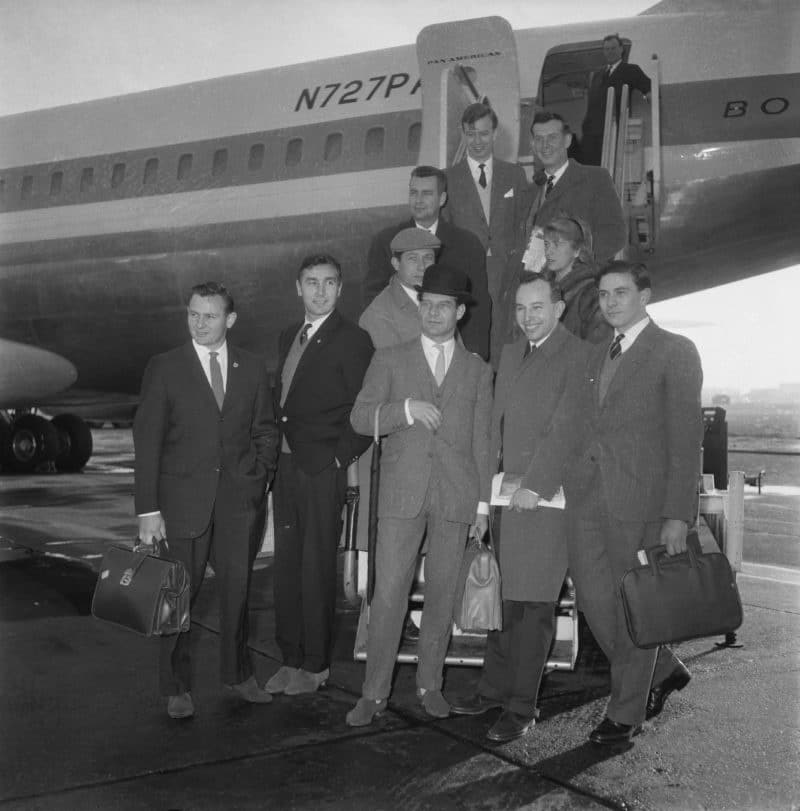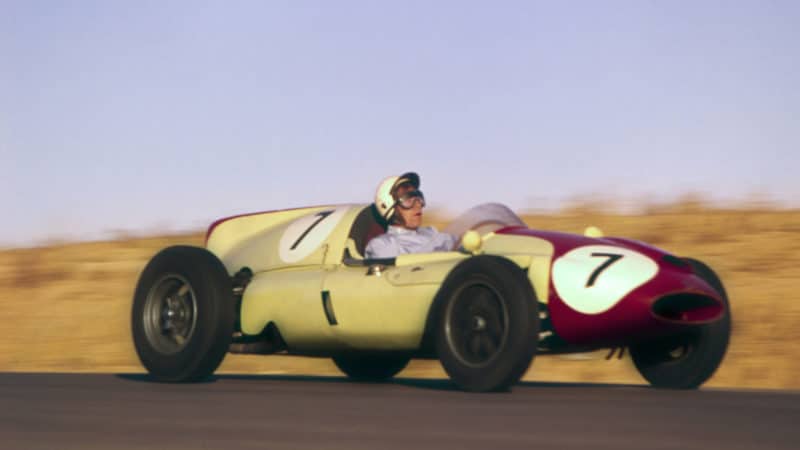At Riverside in November, Michael Tee was on duty for Motor Sport, writing the words as well as taking the pictures as Denis Jenkinson took a leaf from Ferrari. Michael’s report remains a charming time-warp from a simpler time.
He describes the track as an “artificial road circuit running over the undulating desert for 3.275 miles” and talks of hot gusts of wind driving fine sand across the track. Not unlike Bahrain, then.
There were three days of practice, without sprint races or any other made-for-TV gimmicks to break up the track action as Moss set the pace in Rob Walker’s Lotus 18. Next up were the works Coopers: Jack Brabham – already confirmed as a two-time consecutive world champion – Bruce McLaren and Ron Flockhart. Team Lotus had a young Jim Clark, sensitive John Surtees and garrulous Innes Ireland on hand – the works team remarkably still a year away from its first F1 points-paying victory, courtesy of Ireland at The Glen, despite Moss’s successes with Walker’s Type 18s. Meanwhile, Ferrari had released Phil Hill and Wolfgang von Trips to race for Yeoman Credit and Centro Sud respectively.
The race began on the Sunday at 2pm, according to Tee, with Brabham shooting into the lead from Moss, the BRMs of Dan Gurney and Jo Bonnier, with Ireland heading the Team Lotus trio. Innes was still very much ‘head boy’ at this time compared to first years Clark and Surtees, the latter soon walking away from what he would later realise was the most competitive drive of his career, in the wake of tensions with Ireland and puppet master Colin Chapman. And his Lotus career didn’t end well: Surtees spun on lap four, was collected by Clark and retired. Jimmy recovered for repairs but was far too delayed to be a factor.




